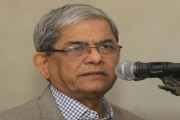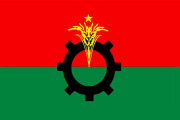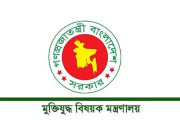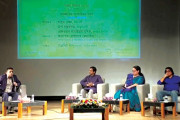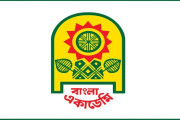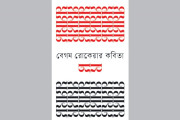Governor Dhankhar takes the salute as the float, designed by state information & culture department headed by Mamata and turned down by Delhi, passes by; Bofors gun on display too
Arnab Ganguly, Calcutta: Around 11 am on Thursday, the 72nd Republic Day at Calcutta’s Red Road, images of Bengal’s most famous freedom fighter Subhas Chandra Bose wheeled down the grey-gravelled road that has seen the evolution of Calcutta from the city of palaces to the façade of public-owned buildings painted blue-and-white.
It took barely three minutes for the tableau to travel past the two seats of power, governor Jagdeep Dhankhar on a dais and to his left at the road level, chief minister Mamata Banerjee with Assembly Speaker Biman Banerjee by her side.
It was the chief minister’s decision to bring the tableau rejected by the powers that be in Delhi to Calcutta, from where Bose, whose 125th birth anniversary the week began with, had left westwards for his quest of India’s freedom.
The tableau, prepared by the information & cultural affairs department headed by Mamata herself, depicted an image of Bose mentioning the 125th birth anniversary, with a statue in the main carriage and the words “Jayatu Netaji” inscribed on one side.
This same image of Bose, in the Indian National Army colours, was denied permission to participate in the Republic Day parade in Delhi held simultaneously with the event in Calcutta and other state capitals across the country.
The parade also included the Bofors gun, which had cost Rajiv Gandhi his second term as prime minister and might have cost the country Kargil and surrounding territories, as well as Param Vir Chakra awardee Abdul Hamid, whose heroics in the 1965 battle of Asal Uttar has long been a part of military lore.
In Mamata’s Calcutta, the spirit of plurality was on display.
“Heartiest greetings to all on the Republic Day. On this day, let us once again take pledge to protect the basic structure of the Indian Constitution, including and particularly its federal character. I salute all our freedom fighters and jawans whose valiant sacrifice and their selfless duty protect our country and ensure our safety and security. My heartiest congratulations to all the countrymen who are the pillars of our democracy,” Mamata’s message shared through a number of tweets early in the morning.
West Bengal along with Kerala, Tamil Nadu and many other states had their tableaux rejected by the Centre, which had selected 12 states, mostly BJP ruled like Karnataka, the only state from the south to be included.
Defence minister Rajnath Singh had defended the decision in a letter to Mamata, saying the Central Public Works Department had already submitted its proposal for the tableau on the same theme as the Bengal government, and that the former had been approved.
Mamata did have her say by bringing the tableau to Calcutta and including it in the parade where governor Dhankhar, a BJP nominee at the Raj Bhawan, took the salute.
“The attempt to erase the history of Bengal and the country is on. Had Bengal not been there, India’s independence would not have been achieved and I take pride in that. I can tell you that there is no power that can erase the history of our country,” Mamata said at an event organised by the state government on Bose’s birthday this January 23rd.
The 72nd Republic Day on the 75th year of India’s independence has been mired in controversies. The tallest Communist leader and former chief minister, Buddhadeb Bhattacharjee, turned down the Centre’s decision to confer him with the Padma Bhushan, the third highest civilian award in the country. The nonagenarian singer, Sandhya Mukhopadhyay, too, turned down a “Padmashree” that was offered to her.
In Calcutta, leader of Opposition Suvendu Adhikary did not find a place in the 60-odd list of invitees that included top bureaucrats, police officers, diplomats and envoys in Calcutta as well as the mayor. With Covid protocols in place, the public of the republic were kept away.






















